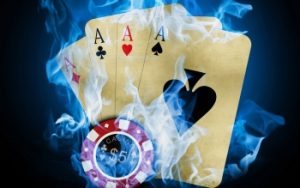 Another cognitive bias worth mentioning is the inability bias. This bias points to two things: our inability to process very large or very small numbers intuitively and our inability to accurately calculate probabilities. In poker, such errors can be crucial. The most problematic example of how the inability bias affects us is through exploitation.
Another cognitive bias worth mentioning is the inability bias. This bias points to two things: our inability to process very large or very small numbers intuitively and our inability to accurately calculate probabilities. In poker, such errors can be crucial. The most problematic example of how the inability bias affects us is through exploitation.
People tend to overestimate large pots. They also tend to assume that if they win or lose large pots, it defines how well they exploit their opponents. The fluctuations of large pots, in reality, say very little. The best players know that often large edges consist of many small and medium-sized pots, which over time usually mean even more than large pots. Your edges in small and medium pots accumulate more slowly, and the mind is not naturally designed to intuitively grasp this.
The mind also calculates risks and rewards very poorly in low-profit situations. For example, in a situation where you bluff 3/5 of the pot on the river with a missed draw, and the opponent catches your bluff on the river 60% of the time, your mind will make you think it's a bad move. This is because you lose more than half of the attempts, which means that more than half of the bluffs result in negative experiences for the mind. Since this is how it works, the mind is not very skilled at sorting these negative experiences, so you don't feel better or worse regardless of the odds or EV margin you tried to capture. The mind is simply not adapted to handle such numbers, but this is exactly what poker demands from us.
The reality is that to make a 3/5 pot bet, you need to have 37.5% fold equity, so if the opponent folds 40% of the time, you net your EV. To regularly capture low-profit EV decisions, you need to train your intuitive subconscious mind to align more with the conscious understanding of odds and probabilities. If you force yourself to be in situations more often where there are low-profit EV decisions and where you lose more often, the subconscious will eventually start to understand how things work. This is one of the main obstacles in poker – the challenge posed by odds and EV, not intuition or fear.
Another closely related bias is the loss aversion bias. Simply put, this bias makes people overestimate the losses they avoid and underestimate new  earnings. It makes people become irrational when taking risks.
earnings. It makes people become irrational when taking risks.
For example, you are in a 300bb pot and have another 200bb that you can push all-in on the river while bluffing. You think the opponent folds 50% of the time, what would you do in such a situation? It turns out that even with such conclusions, most people check back because their mind directs them to keep the money they have. The 200bb you have seems much more valuable than the 300bb in the middle of the table. In other words, losing 200bb hurts more than winning 300bb feels good.
In reality, mathematically calculated, every dollar should be equal to another dollar. An earned dollar should bring as much joy as a lost dollar causes pain.
This bias is harder to overcome due to strong emotions. To overcome it, you need to force your rational mental processes to influence your subconscious. You need to be able to tell yourself: “It's okay, I just lost two buy-ins because I had a good shot at three buy-ins and it was very +EV” and learn to accept such a reasonable explanation. This way, you will teach your mind to naturally accept losses.





